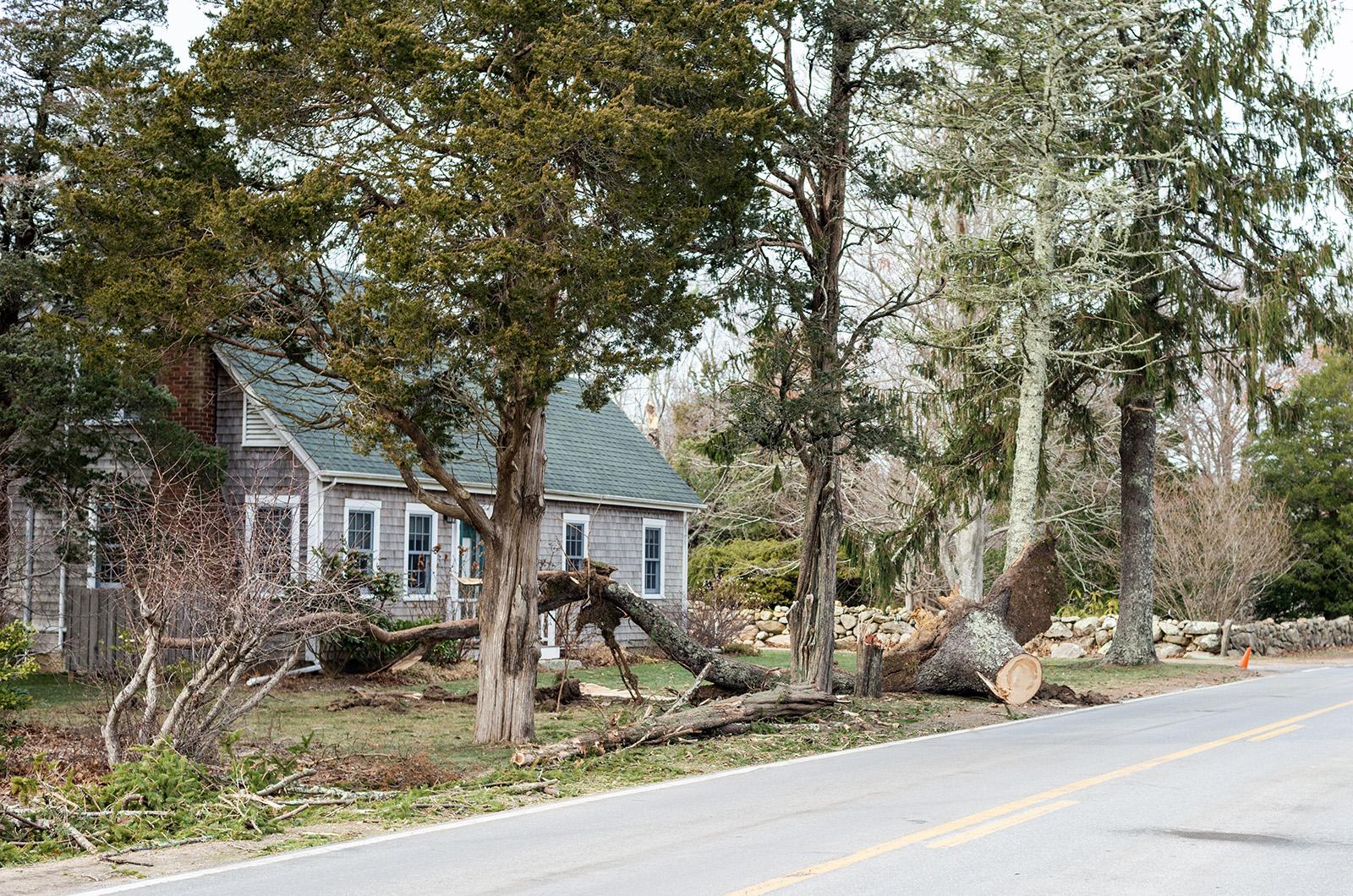The fast-moving, bitterly cold storm that howled across the Island last Friday and Saturday was one for the record books, with wind chills colder than the Island has seen in 50 years. In the oak and beech woodlands that rim the north shore, rushing freshwater streams — full from so much rain this winter — literally froze overnight. It was that cold.
And for many who ventured out later, the giant conifer that went over on State Road near the Polly Hill Arboretum was a small reminder of nature’s ferocity. By some miracle the tree missed both the road and the Littlefield house, where it had stood watch for who knows how many years.
In fact it was two trees that fell, arboretum executive director Tim Boland told the Gazette in an email this week. Both trees were Norway Spruces (Picea abies). Native throughout Europe, these fast-growing trees were commonly planted throughout the Northeast and Midwest and often used for screening and windbreaks.
The larger tree crushed a smaller tree adjacent to it, Mr. Boland said. “The root system dislodged from the ground as strong winds rocked the evergreen boughs of the tree,” he wrote.
Mr. Boland credited arborist Ian Jochems and Eversource for leading the quick cleanup effort, while he was busy in the greenhouses dealing with dangerous subzero conditions for hundreds of specimen plants housed there.
The Littlefield house was purchased in 2001 by the arboretum from the Littlefield family and now houses the curator-assistant director.
“We have restored the house and consider it a important historic structure to preserve,” Mr. Boland wrote. “When you look at homes today, they would not be placed along a busy road, but yet, State Road was not so busy in the mid-1800s and was a dirt road providing critical passage up-Island travel.”
He said it is unknown who planted the spruces, but more than likely it was the Littlefield family. Cleanup work at the site was mostly completed on Thursday. And where the tall tree once stood, only a dark patch of earth remains.




Comments
Comment policy »